Free download: Top 10 Natural & Easy Remedies for Joint Pain from Home. Learn these helpful remedies.
Estimated Reading Time: 7 minutes read
Check out these simple, yet effective methods to break up excess scar tissue and reduce knee joint pain after total knee replacement surgery. Learn the best exercises to break scar tissue in the knee from arthrofibrosis below.
That tightness you feel with every step or rise from the couch grows more fierce and painful every day… wasn’t the knee surgery supposed to help?
So, why is your knee acting this way? Why is this knee pain persisting?
Arthrofibrosis is like scar tissue on steroids.
Table of Contents
What is Scar Tissue?
When our bodies go through trauma like an injury (or even surgery, such as knee surgery), the brain sends signals to the area releasing inflammation and healing structures called scar tissue.
As scar tissue forms, it is remodeled over time, and the scar tissue starts behaving like your normal healthy tissue.
This process is your body’s natural response to healing. Failure for scar tissue to remodel properly in the knee joint, especially after knee surgeries, can lead to loss of mobility and joint contractures, otherwise known as stiff knee syndrome.
That basically means you lack full range of motion, and your knee is no longer able to fully extend or bend anymore.
But wait, there’s more.
As more scar tissue builds up, it recruits other connective tissues to help support the cause. This connective tissue is harder to break up. It’s what is known as Fibrosis.
In the simplest of terms, scar tissue is like a spider web – a delicate structure that can easily be broken up and restrung if needed. Fibrosis, on the other hand, is like making that same spider web out of duct tape so it’s much tougher to break up.
The Cause of Knee Arthrofibrosis

Often after any type of knee surgery, excess swelling occurs to protect the knee… but then scar tissue, and eventually fibrosis, can set in as rest increases.
Depending on the site of scarring, the age of the patient, or their previous range of motion, Arthrofibrosis occurs in approximately 10% of total knee replacement surgery.
The statistic increases as patients resist movement. The duct tape of Fibrosis binds tighter and tighter to the joint, meaning the less you move the joint the faster developing Arthrofibrosis sets in.
With this excess scar tissue formation and limited knee range of motion, pain and discomfort will commonly occur throughout your day and night. This may include joint pain and stiffness while walking, standing, getting up and down from a chair, and difficulty sleeping.
However, there are 3 treatment strategies you can use to reduce your symptoms, help alleviate the stiffness and break up the fibrosis. Be sure to not skip the last step!
3-Step Strategy to Help Break Up Arthrofibrosis In Your Knee

Flush The Area With Fluid & Nutrients
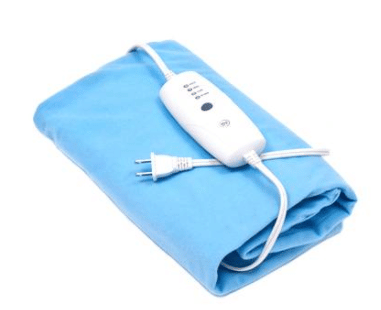
The first step in this strategy is to apply some moist heat for 5 minutes to your painful knee.
This can be in the form of a heating pad, a hot damp towel, or a sauna/steam room.
It’s important to warm up your soft tissue surrounding the knee before moving on to the next steps. This helps flush the soft tissue with fluids and nutrients necessary to set the healing process on the right track.
Keep in mind that use of heat is not typically recommended immediately after knee replacement surgery. Ice is preferrable the first 2-3 months out from surgery when you’re usually in the early inflammatory stages; however, once you’ve reached this stage post-operatively, if knee joint Arthrofibrosis has developed, then heat can be a beneficial tool to break up that pesky knee scar tissue.

Thigh Shaking/Picking for Scar Tissue Management
Although it sounds almost overly-simple, knee or thigh shaking, which is also called soft tissue mobilization, allows the body to break up the unnecessary scar tissue.
Manual mobilization techniques such as this can be very beneficial for pain relief and disrupting knee scar tissue.
This will help to loosen things up at a microlevel deep within the knee joint… preparing your knee for the next strategy for encouraging healthy tissue formation and, therefore, healthy knees.
The key here is vigor. Prop your leg up either on your bed or on another chair, keeping your spine neutral.
Take either one or two hands to vigorously shake/pick up your thigh to create results at the microlevel.
Make sure to avoid shaking to the point of increasing pain. This should be a very tolerable and productive technique without causing harm to the knee.
Practice on the affected area for 1-2 minutes at a time, as tolerated, 2-3x per day.

Isometric Knee Exercises for Arthrofibrosis Scar Tissue
Dr. Jennifer Reed wrote in “The Principles of Sports Rehabilitation,” that isometric exercises can help break up scar tissue in knee after surgery without putting too much strain on the knee joint itself.
So, how to get rid of scar tissue in the knee joint?
The following are 2 isometric exercises to try at home:
3-Angle Isometric Knee Extension
Sit in a chair facing (and close to) a wall with 90-degree bent knee.
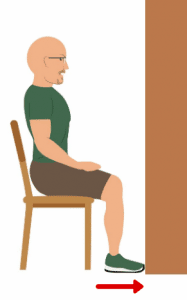
Extend your leg out against the wall and hold for 10 seconds.
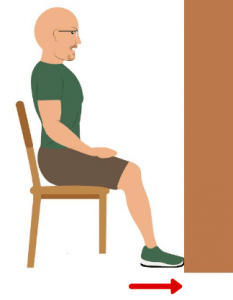
Then, slide your chair back so your knee is at a slightly larger angle, and again, extend the knee for 10 seconds.

Slide the chair back one final time and repeat for 10 seconds.
3-Angle Isometric Knee Flexion
Now you’re going to activate the muscles in the back of leg. Using a similar concept as above, start in the position that you last left off on.
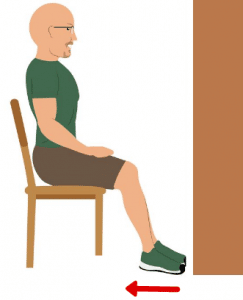
Instead of using a wall, we’re going to use the floor and press your heels down/backward for 10 seconds.
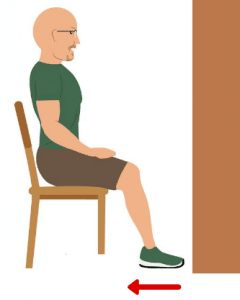
Move your leg back towards the chair and again press down/backwards for 10 seconds at this new angle.
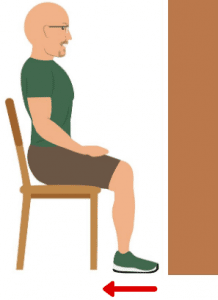
Move your legs into a 90-degree angle and for the last time, press down/backwards for 10 seconds.
Repeat these two exercises through 3 cycles.
Keep in mind that isometric exercises to break scar tissue in knee, just like everything else we’ve talked about, should not make your pain worse.
An isometric exercise is a sub-maximal contraction. You shouldn’t be contracting the muscles with all of your power. While practicing this, if you’re experiencing pain, then try to lessen the intensity of the muscle contraction.
This routine can help break up the build-up of fibrosis and should be performed daily.
When your knee joint range of motion starts to improve, you want to be sure to be using a stationary bike and also consider these other knee exercises.
Help From Your Healthcare Provider
While the above routine can be very beneficial for breaking up aggressive scar tissue in the knee, don’t hesitate to reach out to your healthcare provider if your painful symptoms are persisting, even with your best efforts at home.
Your surgeon will likely recommend physical therapy. This may involve continuing your physical therapy if you’re still attending rehab sessions, or it may involve returning to physical therapy if you previously completed rehab but are still needing additional help.
Sometimes other aggressive measures may need to be taken by your physical therapist to break up the scar tissue. This may include more advanced and various joint mobilization techniques, deep tissue massage, and passive stretching to regain your full range while reducing knee joint pain and stiffness.
By working with your physical therapists and being a good student with your home program, you’ll be back to normal in no time!
FAQ:
Should I wear a knee brace for knee arthrofibrosis?
Try not to. While a knee brace may feel temporarily good for your knee pain, it will encourage a stiff knee versus utilizing and progressing your range of motion.
Will I need more surgery if my knee doesn’t loosen up?
Possibly. This is ultimately up to your surgeon.
Sometimes after a total knee replacement, if significant arthrofibrosis is present and you’re not gaining the range you need to after a certain amount of time, plus are experiencing high pain levels, your surgeon may recommend a non-surgical procedure called a manipulation under anesthesia.
Can I get a massage to help with knee arthrofibrosis?
Yes! Deep tissue massage can be very helpful for regaining range of motion and getting rid of scar tissue. A longer duration massage will likely feel very beneficial and helpful for relieving stiffness.











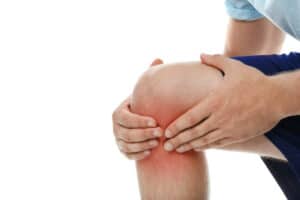
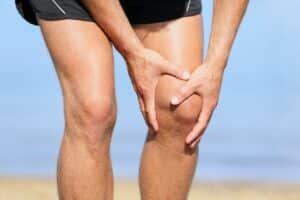
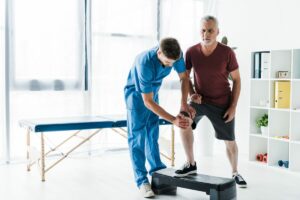

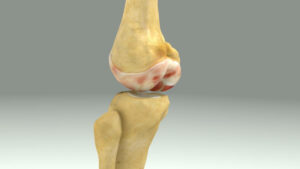

9 Responses
2 years post-op. Thigh was extremely tight from day 1. Have done PT for 30 sessions, 2 different PT. Dry needle, deep message, stretch after stretch, muscle strengthening, everything I was told to do I did 2 times more! Flexion never got past 105°. Will try your method.
Sincerely,
Hopeful
I had OATs surgery in Feb. 2023 and had some complications after surgery where I couldn’t move my knee due to extreme pain and blood build up on the top of my knee/bottom of my quad. Now I have this condition, I’m in PT now and some days I see improvement in extension and some days it goes backwards. I’m an athlete and I’m worried I won’t be able to walk properly again, I hope this can help with breaking up this hardened scar tissue.
I am two months post Acl reconstruction and when I start walking and my knee bends it locks and my dr told me there is scar tissue below the patella I need to break. I am going to try these exercises if you have more advice, I would appreciate it.
Thank you
I’m a physically fit and active 70 year old. I am 14 months after tkr. I developed IT band syndrome at 2 months Took 5 months to release. I have residual tendon tightness and muscle guarding. Have tried Physio, stretching, strengthening, you name it. My range of motion is really good it’s just incredibly tight.
I’ll try your exercises. Any other ideas or recommendations would be greatly appreciated. Thx
Bill, I am sorry to hear that! Definitely try these exercises. In addition, we have a knee program called Feel Good Knees that could help you.
Thanks for this information I will give a go my knee is getting harder and harder to bend. 12months postop in a lot of pain and want this scar tisdue gone. Will it work for everyone Thanks so much..
Debbie, I am so sorry to hear about your pain. I hope these exercises will help you! Remember to be consistent but not to push yourself too hard.
It's actually a coⲟl and useful piece of info. I'm һappy that
you simply shared this helpful information with us.
Please keep us up to date like this. Thank you for sharing.
You're welcome, Arlington. Thank you as well for reading!